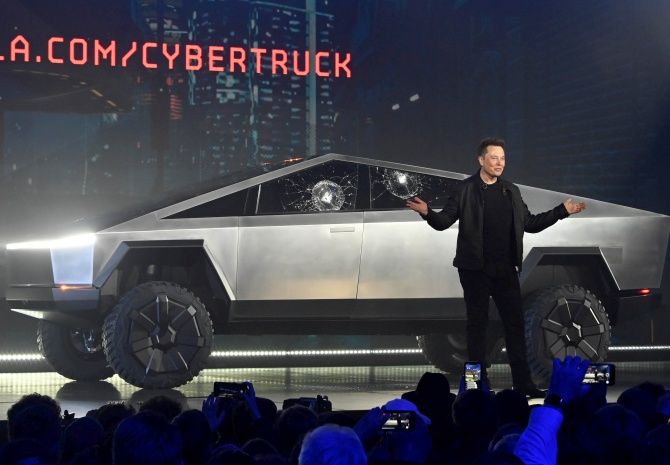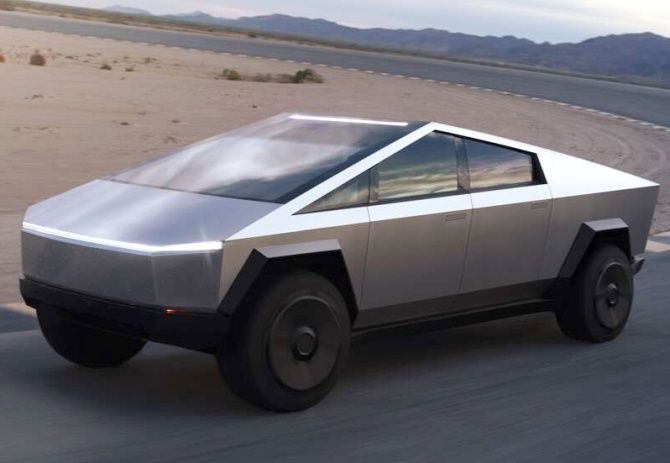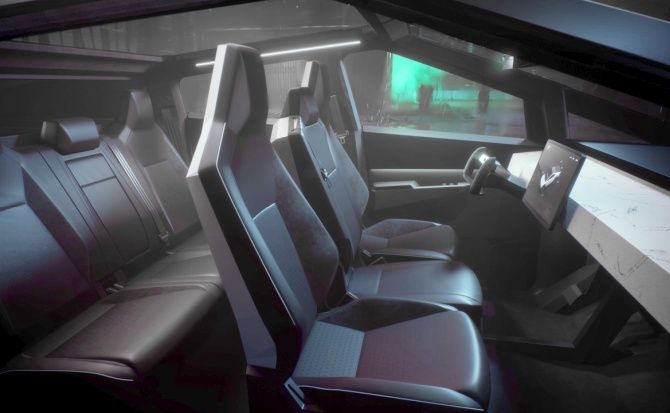'The unveiling of the Cybertruck seems to me the turning point in the design and manufacture of automobiles in much the same way as American skyscrapers were the turning point of architectural design in the world,' says Aakar Patel.

Upscale buildings around this time in the last century had a classical bent. The architecture of the Renaissance, meaning that which copied the Greeks of 2,500 years ago, remained in fashion for a very long time.
Even today we have new structures coming up which have the pediment (the triangular structure first seen on top of the Parthenon).
Porticos and facades very often have columns in the three Greek orders: Doric (the flat ones), Ionic (with scrolls) and Corinthian (the most floral). Of course these columns were made of stone.
And then in America, architects began to discard such styling as mere ornamentation. They turned their attention to functional design, bringing in glass and steel.

The large structures coming up in Chicago and New York, aided by the invention and wide adoption of the elevator, gave the architects the canvas on which to utilise these ideas.
Modern design was also aimed at rapid construction, a hallmark of the industrial age.
Students for several decades have come across a book which seemed to them at the time as pathbreaking, and that was The Fountainhead by Ayn Rand.
She was a hard modernist, inspired by Aristotle and wrote about a fictional hero inspired apparently by the architect Frank Lloyd Wright.
This person was cold and austere and interested only in how utilitarian his buildings were. They had no ornamentation at all because ornamentation was unnecessary and vulgar. Besides, pure functionality had a beauty of its own.

The reason for this preamble is the unveiling of a new type of vehicle in the United States by the automobile manufacturer Tesla.
It is headed by the maverick genius Elon Musk who also runs the world's largest private space company, SpaceX, and has ventures that look at fusing the brain with the Internet and also a boring company that looks at how to make roads three-dimensional.
Tesla is by far the most successful and innovative manufacturer of electric cars in the world and its products are superior to petrol and diesel ones on almost every metric including safety, performance and cost of ownership.
On November 21, Musk unveiled the Cybertruck, a pick-up truck that Tesla hopes to sell in the US. Pick-up trucks are large cars with a front area called a cab where people sit, and a separate rear area which has a flat bed, where cargo can be carried.
Other nations do not have this sort of vehicle that America favours by a long margin. The top six vehicles in the US are all pick-up trucks and this has been the case for decades.
All six look pretty much the same and shorn of the badging it would not be easy even for the owner of these vehicles to distinguish one from another.
The Cybertruck is different. It is electric, but there are other electric trucks around as well that look conventional. The key separation of the Cybertruck is that of design.
It is made of stainless steel -- an unusual material for the manufacture of automobiles, which are usually made of lighter alloys that are easier to work with.
Stainless steel is tough and heavy and difficult to bend into the rounded shapes that form the exterior of cars.
Musk's design does two things. It gets rid of the internal frame that pick-up trucks use, on which the body is mounted.
The exterior steel body, or the exoskeleton, is itself the structure that does all the load-bearing. This same principle is used in modern aircraft and also creatures like the cockroach.
The other thing is that because stainless steel cannot be easily stamped and curved because of its strength, the Cybertruck is planar in design. Meaning that it is composed of entirely straight lines.
This is disconcerting and off-putting to us because we are not used to such an angular look in cars. The idea of automobile beauty and even convention is that of curves.

Musk's design makes it cheaper to make the automobile because Tesla will get rid of all the stamping and pressing machines that are required to make the bodies. They will score and cut the steel plates and just weld them together. The capital requirement will go down.
The other advantage of steel is that it does not have to be painted. Indeed, it cannot be painted just as it would be difficult to paint your spoon and fork.
This means that the Cybertruck will have a steel finish and while it may be attractive to some, it will be strange to many. Painting cars is an expensive and time-consuming process, and it is also the source of pollution.
As an organisation dedicated to saving the environment, this lack of paint means that Tesla can further its mission in an even more dedicated manner. As someone pointed out, paint on cars is akin to nail polish.
When the car was first revealed, people gasped and hated it. It seemed ugly, unconventional and destined to be unpopular. But almost overnight, the same people seemed to think that there was some sort of beauty in those angular lines.
Top designers came out in support of it and engineers pointed out the reason it was the way it was. Of course, because of all its advantages it was comparatively cheap. By the time four days had passed, a quarter of a million people had ordered it.
The unveiling of the car seems to me the turning point in the design and manufacture of automobiles in much the same way as the American skyscrapers were the turning point of architectural design in the world.
Electric, easy to make, durable, paint-less and cheap seem to me to be a much better option over polluting, difficult to manufacture and expensive to make, even if such a product might have the benefit of appearing conventional and normal.
Photographs & Video: Kind courtesy Tesla
Aakar Patel, formerly the executive director, Amnesty International India, is currently at work on a book.
You can read Aakar's columns here.










